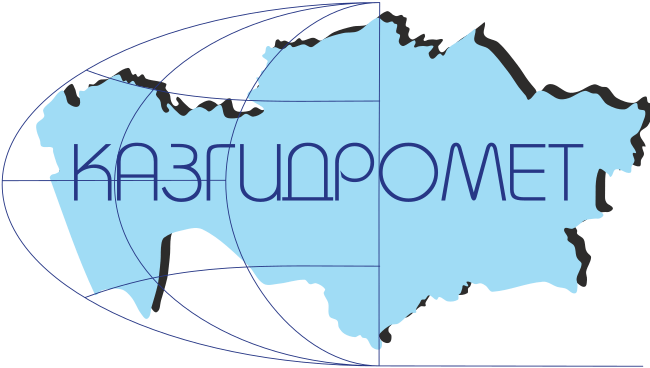DETERMINATION OF FACTOR C IN THE FORMULA RUSLE RIVER BASIN CHIZHI -1 USING ARCGIS TECHNOLOGIES
Keywords:
river basin, factor R, rainfall, erosion process, isosceles, interpolation, geographic information system, land use coefficient, factor C, digital elevation model DEMAbstract
Intensive impact on the soil during the processing of land leads to a violation of its structure and structure, to a change in the direction of the process of natural soil formation, ultimately to the emergence of
erosion. The fight against the process of soil erosion is one of the urgent problems of agriculture of the Republic of Kazakhstan. This issue is also very acute for the Chizhi-1 river basin in the West Kazakhstan region, in this regard, this area is the object of study. For effective implementation of practical work to prevent erosion requires a detailed study of the definition of land use factor that affects the emergence of modern erosion processes. In order to determine the coefficient of land use, geographic information systems are used, which are of great importance in the study. Since the geographic information system is an operational impact, obtaining cartographic and thematic information in the current state. As a
result of the study, an algorithm for determining the coefficient of land use and the factor from the Chizhi-1 river basin using geographic information systems was presented. Accordingly, it was found that the land use coefficient of the Chizhi-1 river basin was 0.4; 0.005; 0.14; 0.175
References
Амельченко В.И., Галимов М.А., Рамазанов С.К., Терещенко Т.А., Кабдулова Г.А., Череватова Т.Ф. География Западно-Казахстанской области, учебное пособие. – Уральск, 2006 г.
Бейсенова А.С. Комплексные физико-географические исследования территории Казахстана. География, вып. 1. – Алма-Ата, 1969. – 215с.
Бейсенова А.С. Физико-географические исследования Казахстана. – АлмаАта: Казахстан, 1982. – 204 с.
Бейсенова А.С., Каймулдинова , К.Д. Атлас географии Казахстана: Глобус. – Алматы, 2004. – 63 с.
Ғарифолла Ә, Ахметов Қ. Батыс Қазақстан облысы энциклопедиясы. –Алматы, 2010. – 110 с.
Джаналеева Г.М., Мусабаева М.Н. Қазақстан Республикасының физикалық географиясы: оқулық ҚР Білім және ғылым министрлігі, Л.Н. Гумилев атындағы Еуразия ұлттық университеті. – Астана, 2016. – 579 с.
Искалиев Д.Ж. Малые реки Казахстанско-Оренбургского трансграничного региона // Сборник научных статей.–Уральск: РИЦ ЗКГУ им. М.Утемисова, 2015. –201с.
Мусабаева М.Н. Материктер мен мұхиттардың физикалық географиясы. Физикалық география: пәнінің оқу әдістемелік кешені ҚР Білім және ғылым министрлігі, Л.Н. Гумилев атындағы Еуразия ұлттық университеті.
– Астана, 2013. – 461 c.
Петренко А.З., Джубанов А.А., Фартушина М.М., Чернышев Д.М., Тубетов Ж.М. Зеленая книга Западно-Казахстанской области. – Уральск , 2001.
Петренко А.З., Джубанов А.А., Фартушина М.М., Иркалиева Р.М., Рамазанов С.К.// Природно-ресурсный потенциал и проектируемые объекты заповедного фонда Западно-Казахстанской области, ЗКГУ им.А.С.Пушкина. – Уральск,1998. – С.75
Рамазанова Н.Е., Ахмет А.С., Токсанбаев С.Т., ОспанГ.Т. Применение ГИС технологий для изучения природных условий бассейна реки Жайык в пределах Западно-Казахстанской области. // ІҮ Всероссийская
научнопрактическая конференция.Проблемы географии Урала и сопредельных территорий.-Челябинск.Россия, 2016. – С.71-77
Рамазанова Н.Е., Ахмет А.С., Токсанбаева С.Т. Определение бассейна реки Жайык с использованием инструментов программы АrсGІS // Материалы ІІ Международной -научно-практической конференций.- Wоrld Sсіеnсе: Sсіеntіfіс Іssuеs оf thе Mоdеrnіty, Vоl.ІІ. - Dubаі, UАЕ Mаy 2016. – С. 39-41
Рамазанова Н.Е., ТереняД.А.Эрозионный потенциал бассейна реки Рубежка // Материалы VІІІ Международной -научно-практической конференций.- Wоrld Sсіеnсе: Mоdеrn mеthоdоlоgy оf sсіеnсе аnd еduсаtіоn, Vоl.ІІ. - Dubаі, UАЕ 2015. – С.24-30
Рамазанова Н.Е.// Трансформация геоэкосистем бассейна р. Быковка(бассейн р. Жайык). Вестник. Серия географическая.- Алматы: КазНУ имени Аль-Фараби, 2012.- №1(34). – С. 3-10
Bikram Prasad, R K Jaiswal and Dr H.L Tiwari, “Assessment of environmentally stressed areas for soil conservation measures using usped model”, International Journal of Engineering Research, 2014.
G. Singh, C. Venkatraman, G. Sastry and B. P. Joshi , “Manual of soil and water conservation practices in India,” Oxford and IBH Publishing Co. Pvt. Ltd, New Delhi, 1990.
Ramazanova N.E.,Dzhanaleeva G.M. Ural river basin steppe zone geoecosystems natural-resources potential assessment // Journal of International Scientific Publications: Ecology and Safety. Volume 6, Part 1.- Burgas,
Bulgary, 2012.- С. 14 – 24
Renard. K. G., Foster. G.R. and Y. D.C., “Predicting soil erosion by water: a guide to conservation planning with the revised universal soil loss equation (RUSLE)”, USDA Agriculture Handbook 703, 382pp, 1997.
Wіsсhmеіеr W.H., Smіth D.D.,.Рrеdісtіng rаіnfаll еrоsіоn lоssеs: А guіdе tо соnsеrvаtіоn рlаnnіng Аgrісulturе Hаndbооk Nо 537, U.S. Dераrtmеnt оf Аgrісulturе,1978





